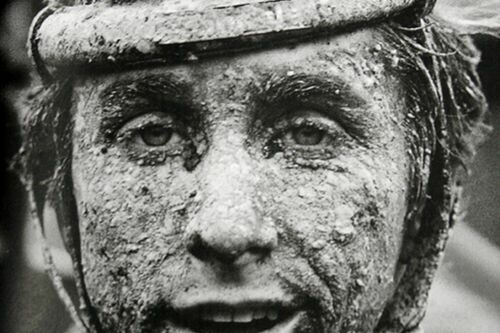Nutrition was not a priority for Tour de France riders.

In the early 1900s, nutrition was not a priority for Tour de France riders. Maurice Garin, the first winner, would reportedly eat and drink whatever he could find along the route, which included 45 cutlets, 19 litres of hot chocolate, 8 cooked eggs, 7 litres of tea, 5 litres of tapioca, 2 kilos of rice, strong red wine, coffee, champagne, and oysters in a 24-hour race.

Until the 1960s, alcohol was a commonly used sports drink, with riders consuming beer, wine, and champagne both for hydration and for pleasure during the long stages. As there were no feeding stations or soigneurs, the wealthier cyclists would be able to have their butlers set up roadside picnics if they could afford it.
Around the time of World War I, the first musettes were used, which allowed cyclists to grab snacks without having to get off their bikes. Cigarettes were also smoked to supposedly “open up the lungs” before big climbs.
In the 1930s, Tour de France riders began to recognize nutrition as important, and by 1939, cyclists at the front of the pack took vitamin supplements. When national teams were introduced in 1930 and sponsored teams in 1962, riders ate their breakfasts and dinners as a team at hotels along the route.
Nutrition became increasingly important from that point on.
Team leaders issued their orders and sent their domestiques to do the actual scavenging. Not only would they take whatever water they could find, but they also often partook in stronger beverages. There are even stories of Eddy Merckx’s 1969 race to Mourenx being fueled by a bidon of champagne. On the other hand, alcohol was a factor in the death of Tom Simpson in 1967.

From Beer and Bananas to Energy Gels
The world of cycling nutrition has seen a recent addition in the form of energy gels and chews. These provide a convenient source of carbohydrates and are popular among endurance athletes. Energy gels come in small packets and are highly concentrated, while energy chews are solid and chewy, designed to be easily digested. Electrolytes, which are minerals that help with muscle function and fluid balance, are lost during exercise and must be replenished. Sports drinks and electrolyte supplements are often used to do this.
For long-distance cycling, a carefully planned strategy is necessary to maintain energy and hydration levels. Combining sports drinks, energy bars, and gels is a popular way to fuel during long rides. It’s important to start early and consume small amounts of food and drink regularly to avoid energy crashes.
Personalized nutrition plans are being developed to optimize performance, as well as the use of natural ingredients, like honey and maple syrup, as a source of energy. However, cyclists can make some common mistakes, such as waiting too long to start fueling, relying too heavily on sugary drinks and snacks, or failing to hydrate properly. With the right knowledge of cycling fueling, cyclists can make informed decisions and maximize their performance. So, remember to fuel up and ride strong!
Rather than being taken as a given, it should be noted that the availability of resources is not infinite. Instead, these resources are limited and must be managed carefully. It is essential to recognize that the finite nature of resources necessitates the need for judicious handling and utilization.




